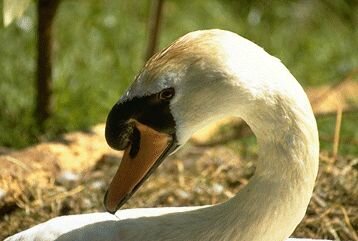 The Mute Swan
The Mute SwanMute Swans, with their grace and beauty, navigate through an intricate web of challenges and ecological intricacies. These majestic birds offer a glimpse into a world of adaptation, survival, and environmental challenges, where understanding their ways is crucial. At cheap papers https://cheap-papers.com/, we'll delve deeper into the world of Mute Swans, exploring their ecology, unique adaptation strategies, the challenges they face, and the importance of their survival in our ecosystem."
Mute Swans, known for their elegance and captivating presence, hold a significant place in the avian world. These birds, native to Europe and Asia, have become a familiar sight in various habitats across the globe. Their serene presence on water bodies has inspired folklore and admiration. But beyond their enchanting beauty lies a story of survival and adaptation.
Mute Swans (Cygnus olor), the largest waterfowl, are recognized by their snowy white plumage and gracefully curved necks. What captures the imagination of many is not just their beauty, but their resilience in adapting to diverse environments and the challenges they confront for survival.
These swans prefer temperate regions and are commonly found on lakes, ponds, and slow-moving rivers. Their adaptability to different environments—freshwater, brackish water, and sometimes even marine habitats—makes them a diverse and successful species.
Their diet primarily consists of aquatic vegetation like pondweeds, sedges, and algae, along with small invertebrates such as mollusks and crustaceans. This plant-based diet not only sustains their energy but also significantly influences their distribution within ecosystems.
Nesting habits involve building mounds of vegetation near water bodies. During the breeding season, these mounds are constructed meticulously and used as a safe haven for their offspring. Both parents actively partake in nest-building and raising their young.
Mute Swans exhibit strong protective behaviors, shielding their young from potential threats and ensuring their survival through their early vulnerable stages. The cygnets, though precocial, rely on their parents for protection and guidance.
Human-Induced Challenges: Mute Swans confront various challenges due to human activities. Habitat loss, pollution, and conflicts arising from urbanization and agriculture significantly impact their survival. Additionally, incidents of lead poisoning from ingesting fishing weights pose severe threats.
Natural Challenges: Predation, diseases, and the impacts of climate change pose substantial threats to their survival, making it an increasingly challenging environment for these birds.
Predation on eggs and young by foxes, minks, and other predators is a significant challenge. Additionally, diseases such as avian botulism and various parasites further contribute to their vulnerabilities.
Efforts are underway to safeguard Mute Swans, with legal protections and conservation strategies being implemented to ensure their survival. These strategies involve habitat preservation, regulation of human activities near their habitats, and public awareness campaigns to minimize human disturbances.
Strategies to manage human interaction with these birds, alongside community involvement and awareness programs, play a crucial role in conserving their habitats. These initiatives aim to strike a balance between human activities and the conservation of Mute Swans and their ecosystems.
Mute Swans play a vital role in maintaining the health of aquatic ecosystems. By foraging on aquatic vegetation, they help regulate vegetation growth, which, in turn, affects water quality and provides habitat for other species. Their presence significantly influences the composition and structure of wetland habitats.
Ongoing studies and technological advancements are shedding light on various aspects of Mute Swans, contributing significantly to our ecological knowledge. Research focuses on their foraging behavior, migratory patterns, and the impact of human activities on their population dynamics.
In conclusion, the adaptation and survival strategies of Mute Swans reflect not only their resilience but also the delicate balance of our ecosystems. Understanding and preserving these magnificent birds is crucial for the preservation of our natural world.